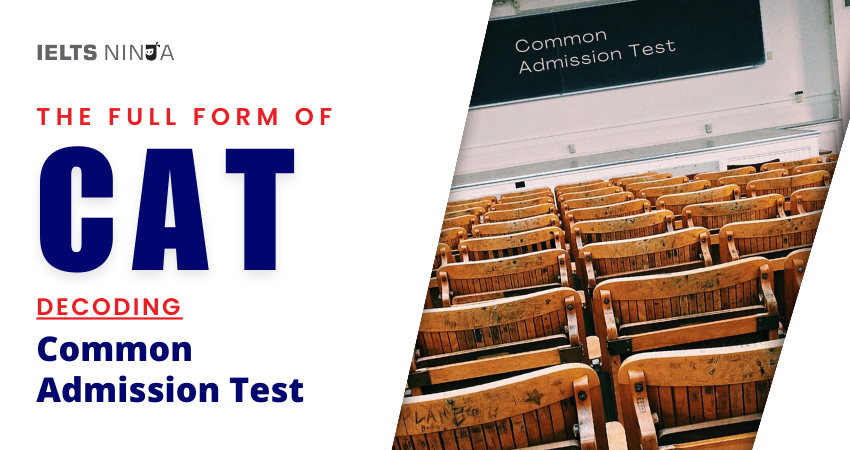The full form of CAT stands for “Common Admission Test”. It is a highly competitive and widely recognized entrance examination conducted in India for admission to postgraduate management programs, primarily in prestigious business schools known as Indian Institutes of Management (IIMs) and various other management institutes across the country. CAT is considered one of the most challenging and competitive management entrance exams in India. In this guide, we will explore the details of CAT, its significance, and the admission process it facilitates.
Key Details of CAT:
Eligibility:
- Candidates must have a bachelor’s degree from a recognized university or institute.
- There is no specific age limit to appear for the CAT exam.
Exam Pattern:
- CAT is a computer-based test (CBT) that assesses candidates’ skills in quantitative aptitude, data interpretation, verbal ability, and logical reasoning.
- The exam duration is typically 2 hours.
- CAT may consist of multiple-choice questions (MCQs) and non-MCQs (also known as subjective or descriptive questions).
- The exam is divided into three sections: Verbal Ability and Reading Comprehension (VARC), Data Interpretation and Logical Reasoning (DILR), and Quantitative Ability (QA).
- Each section is separately timed, and candidates cannot switch between sections.
Scoring:
- CAT uses a scaled scoring system, where each correct answer earns a candidate a specific number of points, while incorrect answers result in negative marks.
- The scoring process involves normalization to adjust for variations in the difficulty level of different exam sessions.
- CAT scores are reported as percentiles, indicating a candidate’s rank relative to other test-takers.
Selection Process:
- After the CAT exam, individual IIMs and other participating management institutes release their cutoff scores.
- Candidates meeting the cutoff criteria are invited for the second stage of the admission process, which may include a Written Ability Test (WAT), Group Discussion (GD), and Personal Interview (PI).
- Final selections are based on the CAT score, academic performance, work experience, and performance in the second stage of the selection process.
Also Read: Best online IELTS coaching & training academy
Significance of CAT:
Gateway to Top B-Schools:
CAT is the primary entrance exam for admission to India’s top business schools, including the Indian Institutes of Management (IIMs).
Quality Education:
Successful candidates gain access to high-quality management education, which can open doors to lucrative career opportunities.
Global Recognition:
IIMs and other top management institutes have a strong global reputation, making CAT a pathway for international career opportunities.
Diverse Career Paths:
A management degree obtained through CAT can lead to careers in various sectors, including finance, consulting, marketing, operations, and entrepreneurship.
Leadership Development:
Management programs foster leadership and problem-solving skills, preparing graduates for leadership roles in organizations.
Networking:
B-schools provide a platform for networking with industry leaders, faculty, and peers, which can be valuable throughout one’s career.
Conclusion:
The Common Admission Test (CAT) is a prestigious entrance exam that serves as a gateway to some of India’s most renowned business schools, offering high-quality management education and diverse career opportunities. CAT’s rigorous examination process and competitive nature make it a significant milestone for individuals aspiring to pursue postgraduate management studies and build successful careers in the corporate world.








